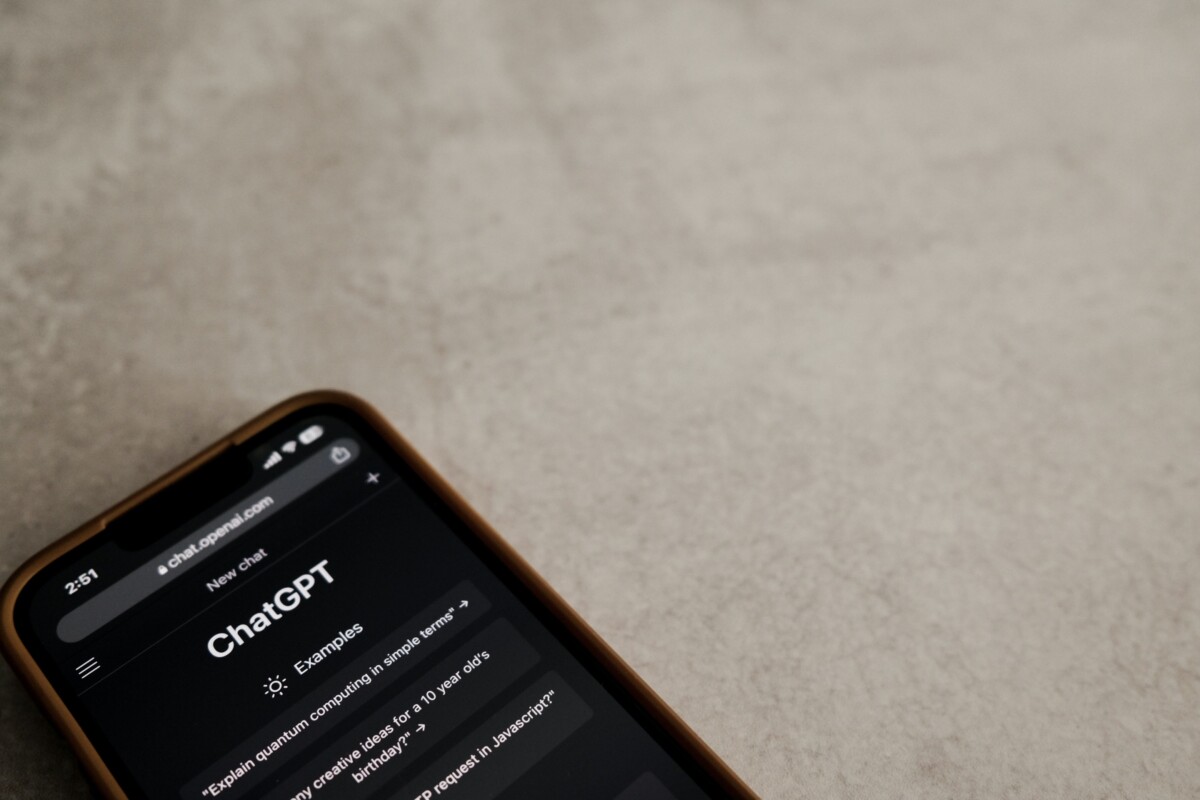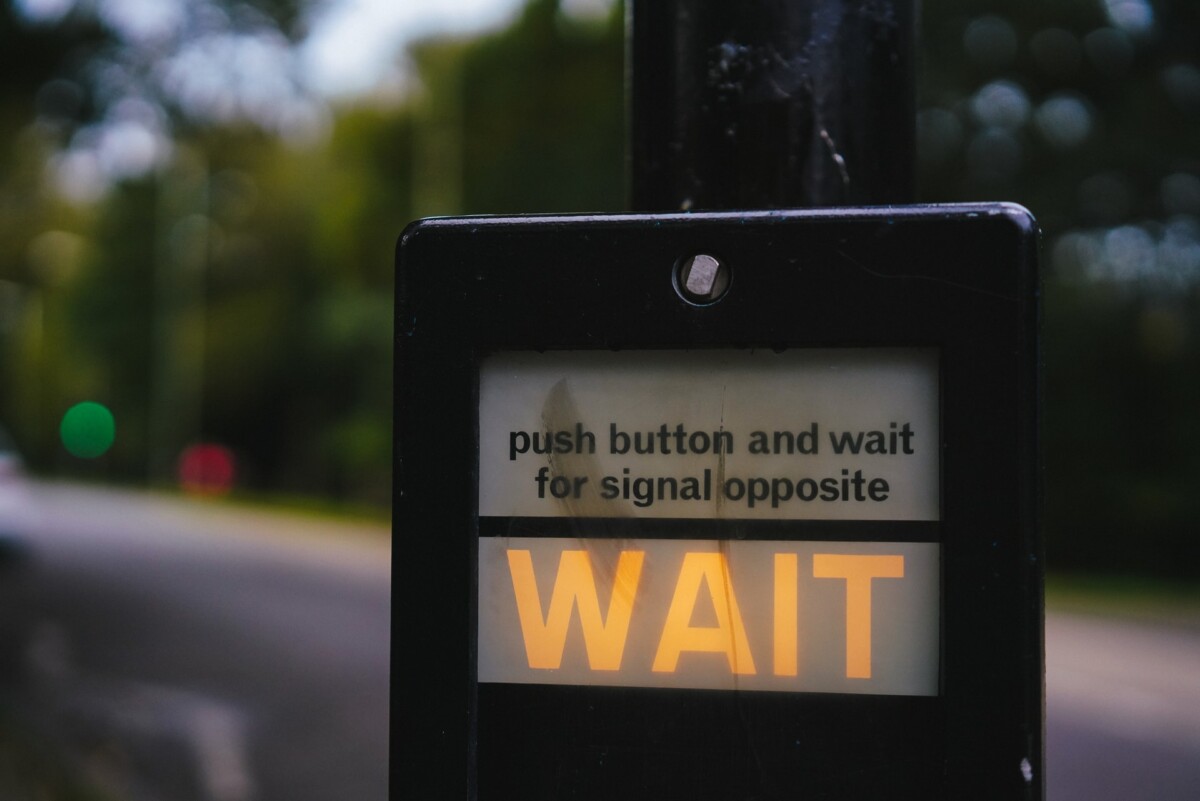AI for fundraising: why ChatGPT matters to fundraisers
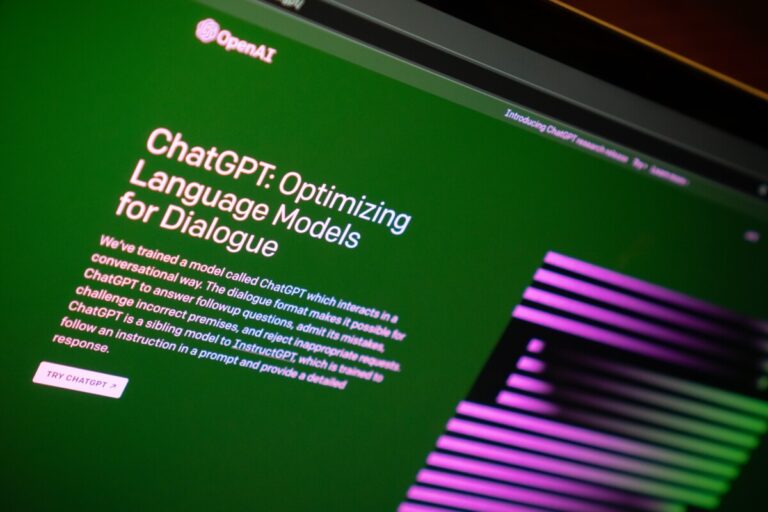
Something happened on 30 November last year that will change all our lives as fundraisers. I’m not given to bombastic claims and even less so predictions about tech. But I’ll take a shot at this one, so shall await the judgement of posterity and/or snarky fundraisers on this one in years to come.
On that date OpenAI unveiled ChatGPT version 3.5. Nearly four months on and plenty of fundraisers have tried it out, and some say they have even integrated some of its functionality into their daily work.
AI in fundraising isn’t new. Plenty of CRM and other products use it and machine learning, and as individuals we benefit from its functionality in day-to-day activities and in many elements of our online lives.
Advertisement
ChatGPT ‘simply’ succeeded in bringing the power and flexibility of OpenAI’s services to the rest of us in the form of a chatbot interface. It is ‘generative AI’ meaning it offers seemingly creative output. By making it free to use (initially), simple to use in your natural language, and by communicating in the sense of a conversation OpenAI has ensured that the entry bar is very low.
If you’ve used a search engine and perhaps a chatbot, you can make a start.
But why is it relevant to fundraisers?
Here’s what inspired me to explore this and related tools more. A simple yet powerful and replicable tool that people could use to make life-changing improvements.
That’s not fundraising of course, but it is an example of a function that any charity can construct to support its service users, clients, or indeed staff, volunteers and general public. It’s replicable at scale. And it is transformational.
And it was GPT3 rather than ChatGPT, and they are different. But that tweet, the morning after ChatGPT was launched, led to me exploring the latest version of GPT and its chatbot-frontend function.
So, here is an initial list of 10 reasons why you are right to be exploring the significance of ChatGPT as a fundraiser.
And one other thought – GPT and ChatGPT were developed by a nonprofit – the Open AI Foundation. That said, it transitioned in 2019 to a ‘unique’ ‘capped for-profit’, with the profit capped at 100 times any investment. Here’s the story:
1. It’s a personal assistant – or several
ChatGPT is an always-on personal assistant, ready to carry out a range of tasks for you, that will save you time. Some organisations that have already integrated into their service, such as Github, refer to it as a ‘co-pilot’.
Any fundraiser, especially sole fundraisers, should welcome this new free source of advice.
Actually it is a whole team of personal assistants. Notice how your prompts (searches/conversations) are saved in your account (they are private to you). You can return at any time to ask a follow-up question.
You never have budget for a larger team, for researchers, for someone who will inspire you, for someone who can work up some good quality copy or research ideas, or for someone who can think about what you’re doing or writing from, for example, a donor’s point of view.
With a little investment of your time, learning from fundraisers who are taking this approach (even using their own prompts if they share them), practising and refining your use of the tool, you can start carrying out some tasks more quickly and with a wider range of input and ideas.
2. It offers different views, formats and quality of responses
By asking ChatGPT to adopt the persona of a donor, a funder, a CEO etc, you can seek its responses to the same question or content from multiple points of view.
“You are not your donor” is true, but it’s easy to forget that. ChatGPT could be used to check that tendency.
When writing for different audiences you need to adapt your content. ChatGPT lets you rewrite material at a certain specified level. How about a paragraph that a typical nine-year-old could understand? Or one that would read more appropriately in a business report, or in an academic paper?
Google and search engines don’t have a tone or personality. “Hi Google (Siri etc) – search for fundraising best practice in supporter journeys, but present the results in language suitable for a 12 year old.”
No, that function doesn’t exist.
But you can ask ChatGPT to adopt a tone or stance.
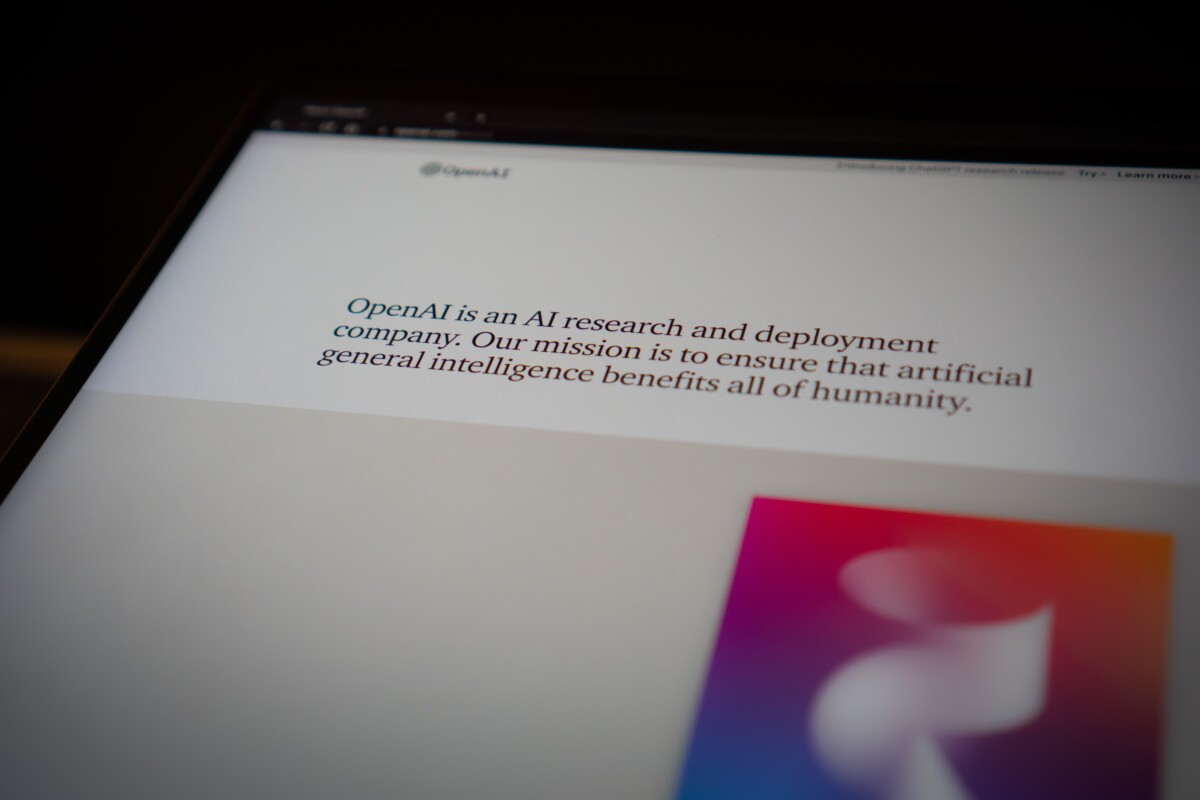
3. Automating or speeding up daily admin tasks
How often do you have to rewrite material? A funding application? A thank you letter? Handling a complaint? A different approach to a campaign web page or leaflet?
ChatGPT can help you save considerable time by suggesting different approaches. Ask it for a range of email subject lines that summarise your draft text but also present a key call to action? Ask for five examples? Not good enough? Ask for 10 more.
And of course ask ChatGPT to spell-check your final version.
Or, should you wish or need (arts charities, this is for you) – turn it into a sonnet, a limerick, a haiku, or an iambic pentameter-based poem. Or simply ask to end with a joke, or a play on words.
Honestly, remarkable as these are, this is the low-hanging fruit of ChatGPT. It’s real significance to fundraisers and businesses comes from making its API available. ChatGPT applied to other tools and apps is where its magic becomes magnified.
4. Used by millions
It is being used by many people, including fundraisers, donors, funders, and in many other walks of life. It is being used by other businesses – lawyers, medical researchers, designers, games developers, and coders.
ChatGPT is now the “fastest-growing consumer application in history”, reaching an estimated 100 million active monthly users in just the two months since its November release. It reached its first one million users in just five days.
Indeed, it has attracted so much attention it made it to the front page of TIME magazine last month.
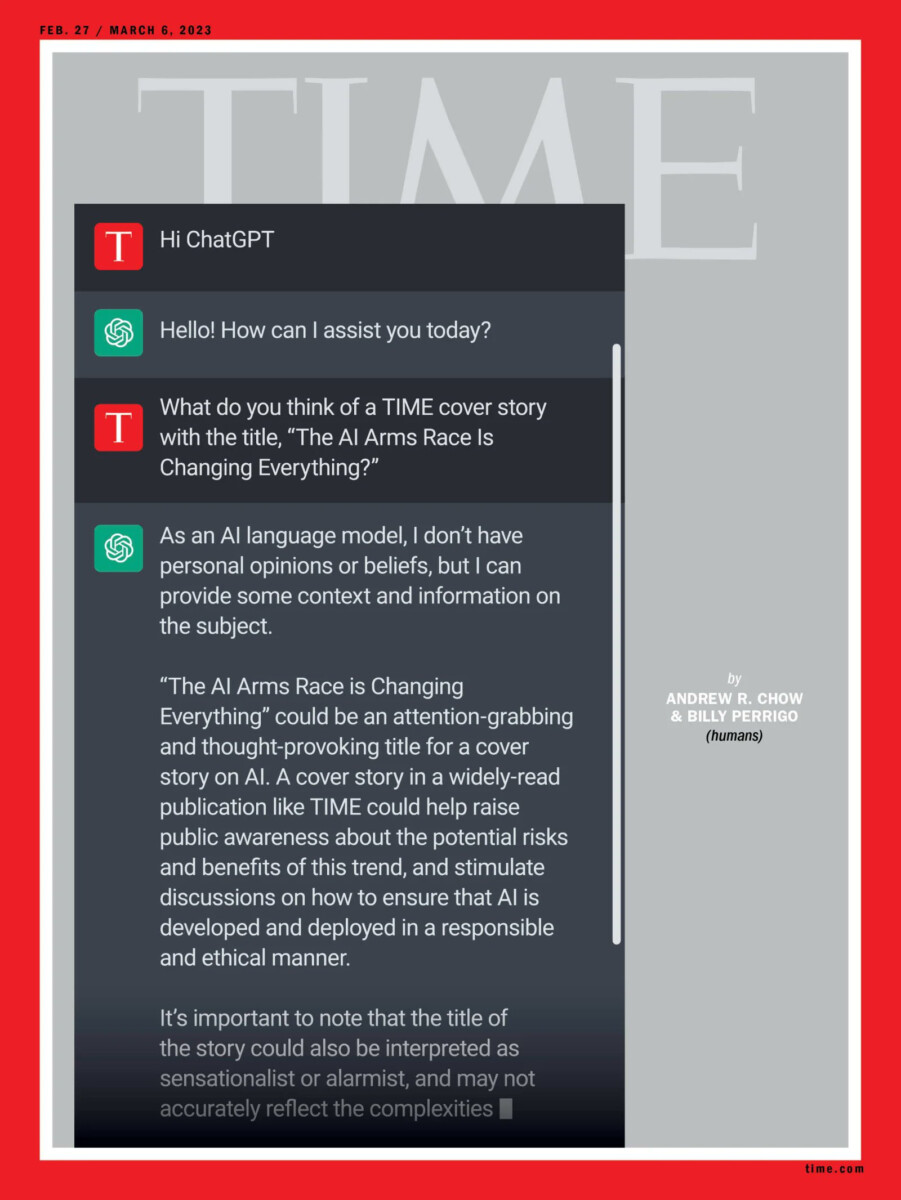
and is the subject of a South Park episode. Do you get the feeling that it has been noticed?
Meanwhile generative AI also made the front cover of Vogue:
5. ChatGPT is low-cost
For such a powerful tool, ChatGPT was initially entirely free to use, but that period has passed. It wasn’t intended to be used freely by so many people. There is now a paid-for tier, but the free version will continue to be available. It will simply be more difficult or slow to access, since paying users will have priority.
6. It is in English
Actually it’s in a wide variety of languages (it handles over 100), but it uses natural language. You don’t need to code to operate it.
Of course, Google, Bing and other search engines have handled natural language for years. What makes ChatGPT different is that it has the ability to engage in a conversation. In other words, you don’t have to ask the question again in full with ChatGPT – it ‘remembers’ what the question or instruction is, so the user can use follow-up questions or comment that the tool ‘understands’ relate to the previous, or previous but one topic and comment. “That’s good, but could you output that in a table?”. “Thanks, but sort the names in date order, not alphabetically”.
So, natural language and this conversation function means it is available to almost anyone.
7. It is being introduced into Microsoft’s tools
If you are one of the billion or so people who use Microsoft tools then the tech company’s $1 billion investment in and strong links with OpenAI from its early days mean that you’re already using ChatGPT or OpenAI functionality. Think of Excel, Powerpoint, and Outlook.
Think too of Bing. Another search engine might be your first choice, but Microsoft’s search engine is being incorporated and integrated with ChatGPT. You now have the opportunity for each search result to be presented in the traditional format of 10 links but also with a direct textual answer from the chatbot.
8. It’s not just Microsoft
The public launch of ChatGPT-3.5 on 30 November 2022 has caused many other companies to bring forward the public release of their equivalent tools. Welcome to the world Sydney, Bard and Claude+.
And Einstein from Salesforce, which has integrated ChatGPT with Slack in a partnership with OpenAI:
And of course Google, which reportedly launched a ‘Code Red’ in response to OpenAI’s launch of ChatGPT, concerned that the tool represented the first real challenge to Google’s dominance in search, and its related advertising income.
On the launch this week of GPT-4 (and ChatGPT-4) Google announced it had introduced generative AI across all of Google Workspace’s tools.
So if you do nothing and never even open a ChatGPT account, as a fundraiser you will still be using AI and large language model tools in your day to day work. Or indeed, you already are.
9. Choose your output formats
Initially ChatGPT was a text-based tool – although that changed this week with the latest version and its anticipated image and video tools.
But even as a purely text-based tool, you can ask it to output data and answers in a variety of formats. Because it handles formatting its responses in the Markdown markup language, it can be prompted to format responses to questions by using headings, bold or italic text, ordered (numbered) or unordered lists, and tables.
You can also prompt the tool to output its content for posting to a certain channel like Twitter or LinkedIn. Just remember to remind ChatGPT about those channels’ text/character limitations.
And ChatGPT conversations themselves can be exported in various formats – PDF, PNG, HTML, JSON and tools like browser extensions let you export them in Markdown format and to tools like Notion.
So, if you need your answers to be ready to use in Excel, to support your fundraising analysis there, you can.
10. Yes, but give me some uses in day to day fundraising
Let’s start with asking simple questions and focusing on ChatGPT’s ability to support creative tasks. Which is where most of the early attention of many users and media coverage has focused.
Ask some general questions:
- Please* give me 10 different ways a charity can write a thank you tweet to someone who has just given their first donation to the charity. Personalise each one by including the donor’s name which is Jo.
- What are five effective email subject lines for a children’s charity to include in its pre-Christmas fundraising appeal campaign? Make sure to stick within recommended maximum character counts for commonly-used email platforms like Mailchimp. Don’t include an emoji.
- Suggest six themes for blog posts that would appeal to charity supporters who take part in sponsored run campaigns. Each blog post must include a title of no more than eight words, and each suggested blog post should include four paragraph themes in one sentence each.
* I’ve used a polite request to ChatGPT not because it is required. A simple, blunt, clear question is perfectly fine. But plenty of users default to asking questions politely. (Orlando Fraser, Charity Commission Chair, would be proud of me in his recommendation that charities focus on using civil discourse and kindness to achieve their ends).
Try taking these basic questions a stage further. Challenge ChatGPT to come back with a slightly different answer. For example, “the last suggestion was the best, but please suggest four different examples that include one example of physical or mental health benefits”.
You can even tell ChatGPT that it is wrong. Ask it if it is sure that its answer, for example, the Gift Aid percentage, is correct? It can admit it is in error and return a reworked answer.
As well as attempts to stimulate your creativity or content work, you can of course use ChatGPT to answer specific questions.
- What size donation in £ do most UK cancer charities suggest constitutes a major gift?
- Where can I find free and up to date resources on grants and funding for small charities in the UK?
- Which research tools and resources do prospect researchers at UK charities use to learn more about major donors at their charity or about people who might make a major gift to their charity?
- Which income sources for UK registered charities have grown the most between 2016 and 2021?
- Which charities publish codes of practice for volunteering in England and Wales?
Again, challenging ChatGPT or asking a follow-up or ‘chain question’ is recommended.
And these are pure fundraising questions. What about all the other fundraising business uses? Your fundraising relies on SEO – your web developer colleagues could already by using ChatGPT to enhance your site’s SEO.
If any of your colleagues or business partners work with code, they are almost certain to be using Chat GPT to test out and check code in a variety of languages.
How about taking notes of meetings? And coming up with actions? How much of your time would be saved if those were automated accurately?
Reading reports? How much time do you take to scan a report, or summarise it for colleagues?
What about catching up on some podcasts? Is there a quick highlights of the last four hours of content – topics covered, key quotes?
And the videos you need to watch but don’t quite have the time? Would a text summary (with time marks for different topics) help free you up for other fundraising work?
And because the implications of generative AI are so substantial, here’s the inevitable 11th of 10 reasons.
11. Meet the founders in the AI gold rush
The AI sector is growing at a dizzying pace. A slew of new products and services is appearing every week, from startups to major tech companies. A lot of investment is being directed into the sector. Given the global popularity of ChatGPT and other generative AI tools like image generators Midjourney and Leonardo it is likely there will be a new group of wealthy founders, core team members and investors.
Which generative AI founders have you been following or contacting? Which of them might or do have an interest in your charity’s work?
ChatGPT really isn’t what matters
I hope you are now encouraged to start exploring some of these tools. Despite the many limitations and weaknesses of generative AI (who would build a free global personal assistant based on the contents of the gold-dust and rant-ridden grime of the web?!) it changes the way we all work.
But please don’t get too focused on ChatGPT itself. It’s the tool that has grabbed the headlines and has done so again this week with version 4.
But it you’re simply viewing it at the level of a solution to your writers’ block or for inspiration for content, and end up thinking or commenting on how creativity remains the preserve of humans, you’re not wrong, but I suggest that is a limiting view of how your fundraising can benefit.
It is the far wider approach that generative AI offers that matters.
It’s a little like focusing only on NCSA Mosaic, Viola and Cello – some of the early web browsers in the early 90s. They were fabulous, a new window on the world and information retrieval (yes, that’s how information scientists talked). But it was the World Wide Web itself – its (mostly) standards-based hypertext function of linking to related content and open approach to allowing (almost) anyone to publish content globally – that was the innovation and transformation.
OpenAI cofounder and CEO Sam Altman admits that ChatGPT has many limitations. He referred to version 3.5 as a “horrible product” during a recent episode of the New York Times tech podcast “Hard Fork.”
If you experimented with version 3.5 and were unimpressed with its current utility, depth or accuracy (and you’re right to question every response it provides), do note how very quickly it is becoming far faster, handles far more content types (images!) and will handle larger inputs from you. That figure jumped to 25,000 words this week:
But ChatGPT is just one interface to OpenAI’s work. Don’t forget there are any number of other other tools offering similar functionality. And OpenAI itself is just one of many organisations and platforms developing AI-based tools.
I’ll be following this post here with a series that looks at:
- other charity sector thoughts and advice on using ChatGPT
- a summary of some of the risks, gaps and challenges for any business that using generative AI presents
- a focus on what ChatGPT 4.0 brings to us as fundraisers
- other generative AI tools that can help you
- a whole list of questions and challenges that have occurred to me. For example, have a look at the board of OpenAI…
I’ll probably not cover the question of whether your fundraising job is about to disappear “because of AI”.
I might then switch to a new newsletter covering tools and tips in this area. I see these tools as a practical component of achieving growth of impact and income for small and large charities. Let me know if that newsletter sounds of interest to you.
For some time I’ve already been sharing generative AI tools for creating images and videos in my Graphic Traffic courses – text to image and text to video – and in my regular newsletter spin-off Graphic Traffic News. If you’ve come on my course, remember Lumen5 and Descript?
What to do next?
- Try out ChatGPT for yourself. You can still do so for free, although currently ChatGPT-4 is only available to paying users.
- Try out Bing too, to see how another tool in this area operates.
- Consider sharing your experience – with UK Fundraising, on Twitter, LinkedIn, and in other networks of fundraisers. Who is going to produce a directory of fundraisers’ prompts?
- Be ready for more rapid-pace developments. Midjourney version 5 is just one of the big changes being announced this week alone!
- Watch what Ian McLintock is creating for fundraisers and the wider sector on Charity Excellence. AI chatbots that pull together answers not just from his extensive site, but from UK Fundraising and other sources. Look out for the tech bunnies… And for his upcoming AI-based funding bid-writing tool.
- Avoid limiting your view of ChatGPT, its spinoffs and competitors, as little more than a useful creativity tool.
Fundraising prompts
Here’s how I saw 2023 and the significance of generative AI for fundraising at the last day of 2022, after one month of using, researching and watching the exploits of others with ChatGPT:
And, remembering the days long ago when I was looking for the first job advert from a charity for a ‘online fundraiser’ staff role (congratulations British Red Cross!), I’ll let you know if or when I spot the first job ad for a ‘Fundraising Prompt Engineer’.
And you know that you are welcome to add comments on this in the box below.
Back to Danny Richman’s literacy tool
I wasn’t the only person that spotted the significance of Danny’s tool that I featured at the beginning of this post.
You’ll be pleased to know that the British Dyslexia Association have collaborated with him on a GPT3-powered app for use by anyone with dyslexia.
PS. UK Fundraising, and its 28+ years of content and development, is based on a combination of my fundraising experience and a Masters in Information Science at London’s City University in the early 1990s.
- More thoughts on ChatGPT from the fundraising sector (17 March 2023)





